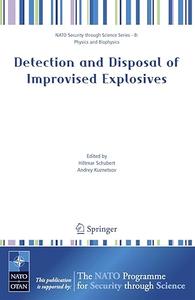
Free Download Test Methods for Explosives By Muhamed Sućeska Ph.D. (auth.)
1995 | 225 Pages | ISBN: 1461269040 | PDF | 7 MB
It seems that there is no book that treats the measurement of the physical pa rameters of explosives as its only subject, although limited information is avail able in a number of books. Therefore, I have tried to bridge this gap in the lit erature with this book. A large number of various physical parameters have to be determined ex perimentally in order to test or characterise an explosive. Various physical principles have been applied for such measurements. Accordingly, a large number of different experimental methods exist, as well as various testing appa ratuses and procedures. On the other hand, great progress has been made recently in the study of detonation phenomena. New measuring techniques can assess extremely short processes to below nanoseconds scale. They make it possible to determine im portant parameters in detonation physics. I have made a great attempt to cover the available literature data on the subject. Because it would be a highly demanding task to include in a single volume all the methods that are in use by various testing agencies, I have tried to give primarily the principles for determination of individual physical pa rameters of explosives by different measuring methods as well as data treatment procedures.


